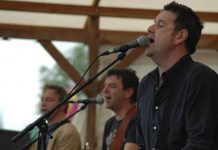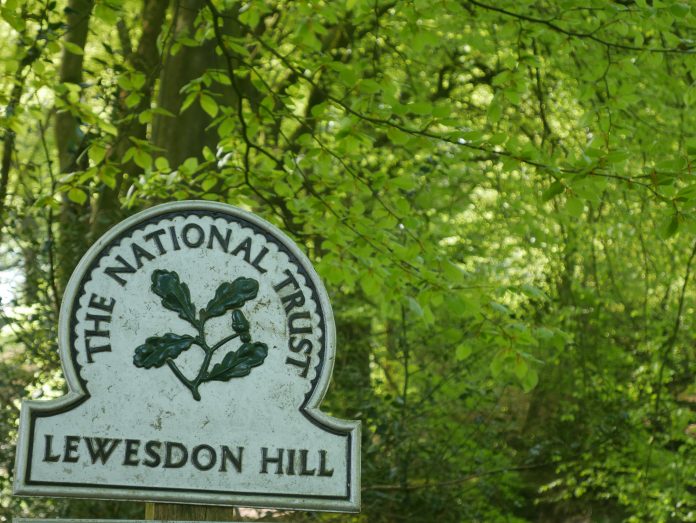As people flocked to the West Dorset coast to bask in spring sunshine, my head and heart – as usual – were inland.
Dry fields covered in cuckoo flowers; pistachio-green beech leaves dazzling in the dappled sunshine and hundreds of fragrant bluebells along the hedgerows and on Lewesdon’s slopes. This, to me, is what spring, and May in particular, is all about.
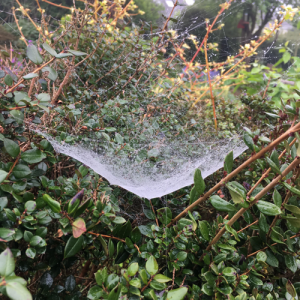 When spiders make early-morning parachutes in the privet, slow worms crawl with a great deal of effort in backyards and lambs bounce up and down in the pasture, as curious cattle gather in shadowy gateways to escape the heat of the sun. Rural countryside bliss.
When spiders make early-morning parachutes in the privet, slow worms crawl with a great deal of effort in backyards and lambs bounce up and down in the pasture, as curious cattle gather in shadowy gateways to escape the heat of the sun. Rural countryside bliss.
But even Lewesdon Hill, Dorset’s highest point, was busier than usual this Bank Holiday weekend. Families, with small children and picnic backpacks, strolled its plateau, boys and girls looking for rope swings and hiding in trees. Down below, an elderly couple in beanie hats and with two little dogs on leads commented on the exemplary behaviour of our Korthals Griffon as it unusually walked to heel.
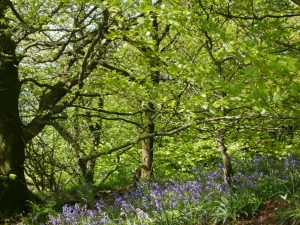 Bluebells are at their finest now and one of the best places to see them is Lewesdon, which is managed with a light touch by The National Trust. The contrast of bright blue against the green beech trees at this time of year is one of nature’s marvels. And, at 279 metres high, there are views here between the trees over Dorset, Devon, Somerset and out to sea. From the summit, the topography of the Marshwood Vale is laid out like a beautifully moulded jelly.
Bluebells are at their finest now and one of the best places to see them is Lewesdon, which is managed with a light touch by The National Trust. The contrast of bright blue against the green beech trees at this time of year is one of nature’s marvels. And, at 279 metres high, there are views here between the trees over Dorset, Devon, Somerset and out to sea. From the summit, the topography of the Marshwood Vale is laid out like a beautifully moulded jelly.
According to Wikipedia, Lewesdon’s topographic prominence of 185 metres qualifies it as a Marilyn: “A Marilyn is a mountain or hill in the United Kingdom, Republic of Ireland or Isle of Man with a prominence of at least 150 metres (492 ft), regardless of absolute height or other merit. The name was coined as a punning contrast to the designation Munro, used for a Scottish mountain with a height of more than 3,000 feet (914.4 m), which is homophonous with (Marilyn) Monroe.”
Below Lewesdon’s wooded summit, farmers cut and turned the first lot of silage, tractors roared up and down the narrow lanes and The Melplash Agricultural Society announced that competition schedules were at the printers and would soon be available for perusal.
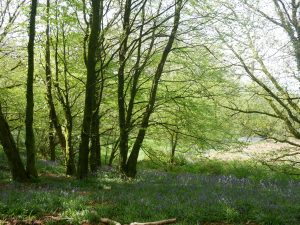 After months of sogginess, the Dorset countryside is springing back into shape and slipping into the seasons’ natural rhythm. It feels like hope is not just on the horizon, it’s actually here, although we are due rain and colder temperatures later in the week.
After months of sogginess, the Dorset countryside is springing back into shape and slipping into the seasons’ natural rhythm. It feels like hope is not just on the horizon, it’s actually here, although we are due rain and colder temperatures later in the week.
Young schoolchildren are in training for Maypole Dancing, weaving intricate patterns with their ribbons and skipping feet, as village street fairs and fetes are planned, while big countryside events like Buckham Fair and The Melplash Show loom ever closer.
Older students are in the midst of revision, longing for summer, which will mean exams are over and done with and the dice have already been cast.
Like the ascent of Lewesdon, it’ll be a long slog but well worth it in the end.




